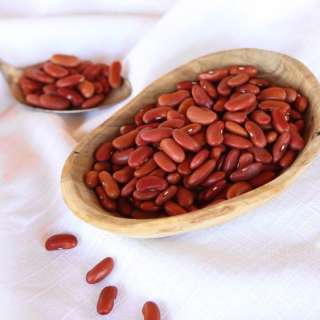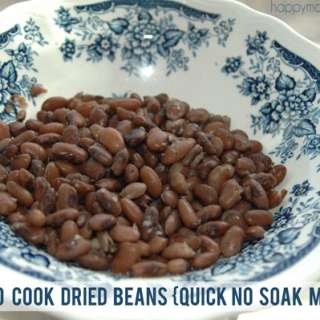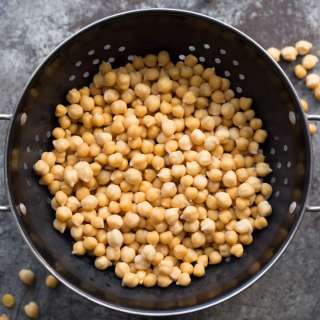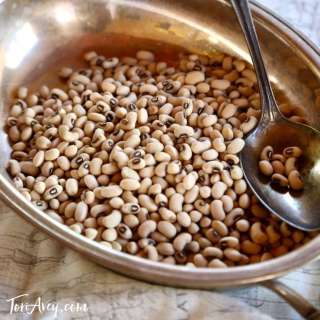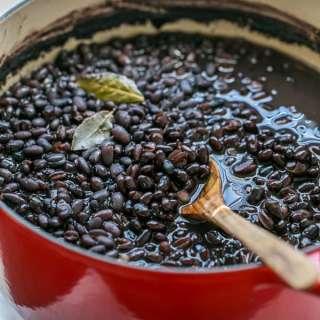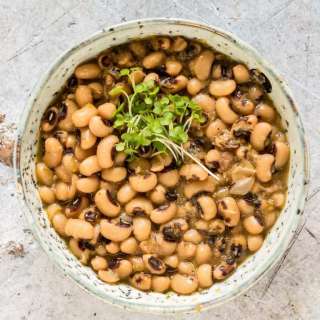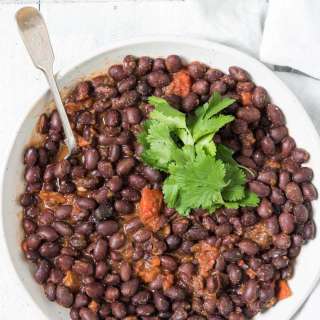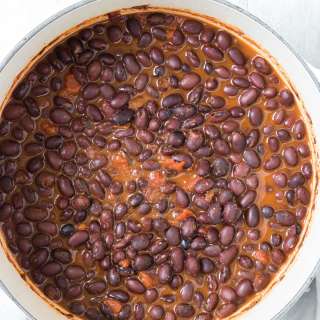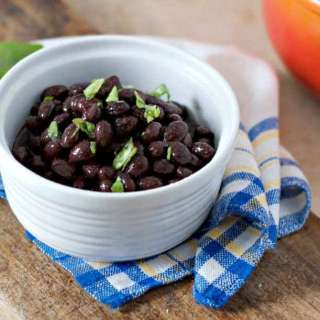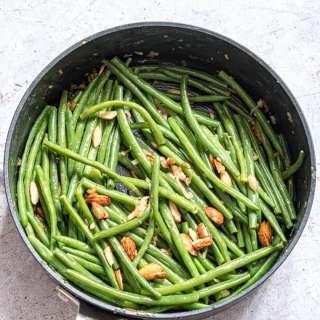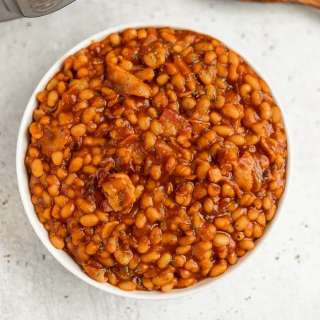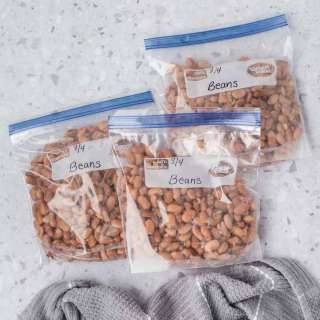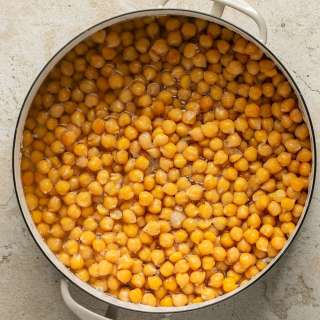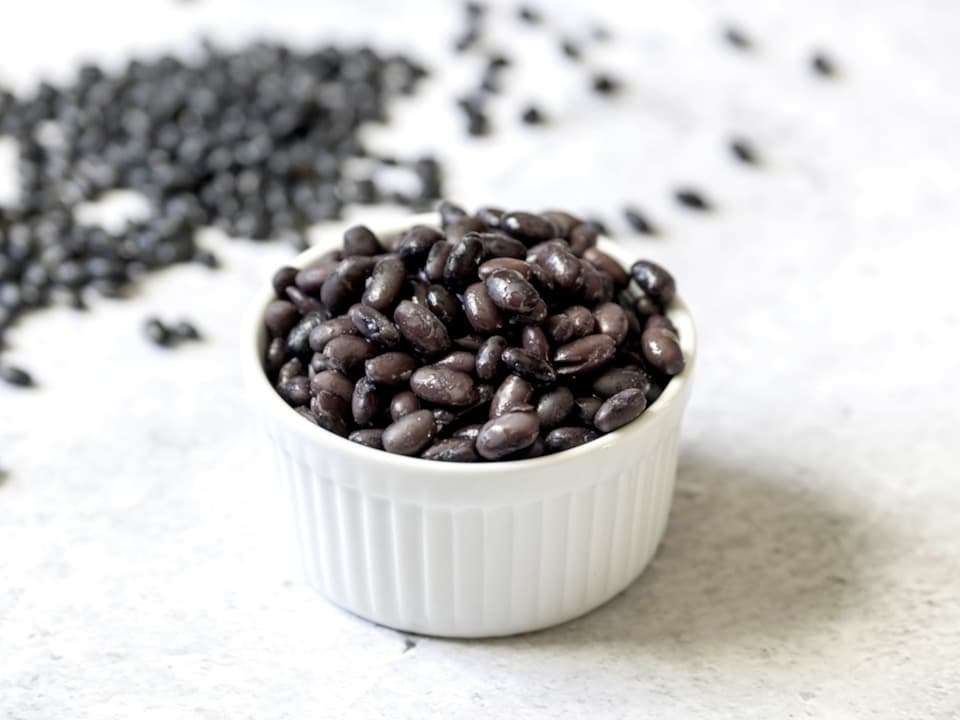
How to Soak, Cook and Freeze Dried Black Beans
User Reviews
5.0
15 reviews
Excellent

How to Soak, Cook and Freeze Dried Black Beans
Report
Learn how to cook dried black beans to prepare them for use in recipes. Includes storage and freezing techniques.
Share:
Ingredients
- 1 pound dried black beans (please refer to instructions below if you plan to cook more or less)
- 20 cups water, divided
- salt (optional)
You will also need
- large pot with lid, colander, freezer bags or containers (optional)
Instructions
- The method below uses a ratio of 10 cups of water per pound of dried black beans, if you plan to use a different amount, please adjust accordingly using this ratio.In a large pot or bowl combine the black beans with water at a ratio of 10 cups of water per pound of dried beans. Soak overnight. NOTE: black beans don't absolutely need to be presoaked before cooking, however I always soak them for three reasons - it speeds up the cook time, helps the beans to cook more evenly, and makes them easier to digest.Once the beans have soaked, you will notice that they have increased in size, indicating that they have absorbed moisture.
- To quick soak the beans, you will need 1 hour. Place the black beans into the bottom of a large pot and cover with water. Bring beans to a boil. Let them boil for 3 minutes, then remove from heat. Soak 1 hour. The beans will expand, so make sure you cover by several inches of water to allow for this.After soaking using either method, drain and rinse the beans.
- Place the beans in a large pot and cover again with the same ratio of fresh water. It is important to use fresh water for boiling; the soaking water contains oligosaccharides, released from the beans during soaking, that can lead to digestive discomfort. Add salt to the cooking water if desired to give the beans more flavor (I use about 1 tablespoon salt for every 10 cups of water). Place on the stovetop and bring to a boil, then reduce to a simmer. Simmer for 1 hour, or until you reach desired tenderness. I recommend stirring the beans a few times throughout the cooking process so that the beans at the bottom of the pot don’t soften before the beans at the top.
- Once the beans have finished cooking, drain them in a colander.
- If freezing, allow the beans to cool completely. You can speed this process by rinsing them with cold water, just be sure to drain them completely. Transfer them to a freezer safe container (I recommend resealable freezer bags) and freeze until needed. I like to measure out 1 ¾ cups of beans in each bag, which is equivalent to the amount in a standard sized can. They will keep in the freezer for up to 6 months.
- When ready to use your frozen beans, remove the beans from the freezer and thaw. They can be reheated on the stovetop, added to soups and stews or used however you would use canned beans.
Notes
- Makes 4 "cans" of beans.
Nutrition Information
Show Details
Calories
96kcal
(5%)
Carbohydrates
17g
(6%)
Protein
6g
(12%)
Sodium
17mg
(1%)
Potassium
420mg
(12%)
Fiber
4g
(16%)
Vitamin A
5IU
(0%)
Calcium
44mg
(4%)
Iron
1.4mg
(8%)
Nutrition Facts
Serving: 16servings
Amount Per Serving
Calories 96 kcal
% Daily Value*
| Calories | 96kcal | 5% |
| Carbohydrates | 17g | 6% |
| Protein | 6g | 12% |
| Sodium | 17mg | 1% |
| Potassium | 420mg | 9% |
| Fiber | 4g | 16% |
| Vitamin A | 5IU | 0% |
| Calcium | 44mg | 4% |
| Iron | 1.4mg | 8% |
* Percent Daily Values are based on a 2,000 calorie diet.
Genuine Reviews
User Reviews
Overall Rating
5.0
15 reviews
Excellent
Other Recipes
